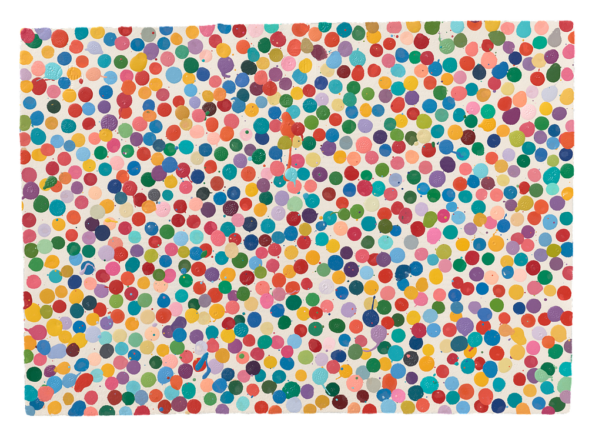Damien Hirst NFT holders split as half of collection burned
Important takeaways
- The burning deadline for Damien Hirst’s The Currency NFT collection closed today.
- Just over half of the NFTs were burned, making the digital chips slightly scarcer than their physical equivalents.
- Despite the buzz surrounding Hirst’s collection, the NFT space continues to suffer due to the prolonged downturn in the crypto market.
Share this article
5,142 NFTs were exchanged for physical paintings, making the remaining digital pieces more scarce than their physical counterparts.
Damien Hirst’s art burning deadline closes
Damien Hirst fans seem divided on whether physical art is more valuable than digital art.
The burning deadline for the legendary artist’s first NFT collection ended today with just over half of the holders choosing to redeem their digital collectible for an equivalent physical artwork. 5,142 NFTs from the collection were exchanged for physical works, leaving 4,858 NFTs.

The 10,000-piece collection, called The Currency, was launched in July 2021 amid a boom in the NFT market. Created in 2016 and later embossed on the Palm blockchain, the collection references the iconic polka dot style pioneered by Hirst. Hirst chose to make his first foray into the digital art space with a unique twist: anyone who bought one of the NFTs could choose to burn their token in exchange for a corresponding physical piece. Conversely, the physical work would be destroyed if the collector kept his NFT.
“The Currency explores the boundaries of art and currency – when art changes and becomes a currency, and when currency becomes art,” said the promotional copy for The Currency. The collection was sold with an entry price of $2,000; today, the NFTs are worth the equivalent of around $7,500 on the secondary market (Hirst also rewarded collectors with a Thanksgiving airdrop based on his artwork for Drake’s Certified Lover Boy cover in November).
Although the collection experimented with determining the value of physical art versus digital art, the outcome of the fiery incident indicates that Hirst collectors in the still-niche NFT market are largely undecided.
The NFT market takes a hit
While Hirst’s The Currency was the talk of the NFT space today, the broader market has suffered for months as crypto endures an extended winter period. Trading volumes on marketplaces such as OpenSea have plunged to 12-month lows as confidence in space wanes and macroeconomic fears persist, while floor prices for many top-tier collections have fallen from their all-time highs alongside fungible crypto assets such as Bitcoin and Ethereum. Bored Ape Yacht Club, the breakout star of the 2021 NFT bull run, topped a floor price of $436,000 in May; today the cheapest ones go for close to $127,000 (the floor price for a monkey has dropped from 156 ETH to 86 ETH, but ETH has also gone down in dollars).
Damien Hirst is one of the world’s most recognized artists. He is arguably best known for his various 1990s works that preserved dead animals, including “The Physical Impossibility of Death in the Mind of Someone Living,” which featured a 14-foot-long tiger shark in a formaldehyde-filled tank. He has embraced NFTs since the market exploded in 2021, following up The Currency and accompanying airdrop with a new collection called The Empresses earlier this year.
Disclosure: At the time of writing, the author of this piece owned some Otherside NFTs, ETH and several other fungible and non-fungible cryptocurrencies.


